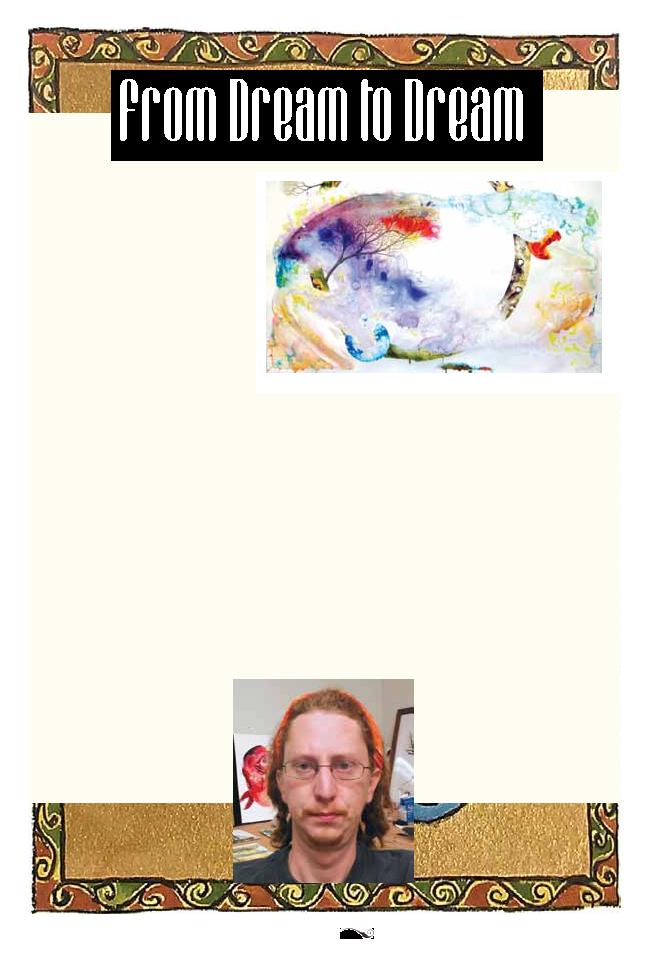
native, Nathan Popp, terms
his work "surreal landscapes,
floating on an abstract
background," there's nothing
surreal about his talent or his
passion for the medium of
watercolor. Rooted around
reconstruction, Nathan makes his
point through the extensive use of
suspended circles, bare branches, and exposed roots
of trees growing out of segments of earth. Nathan
expresses, "In my work, the tree symbolizes growth
in a landscape of destruction. I have always been
fascinated by trees, but they were not always the
main focus of the art I created. The circle is an object
of nature, an idealization of pure mathematics, and
a symbol we use to understand our world."
penchant for noticing details began as a child, when
he adds, "From an early age I would pick up objects
and carefully observe or study them. This careful
perception may be the reason I am an artist today."
Being exposed to art and artists early on helped
shape Nathan's craft, and the list of artists who
inspire him is long, yet the driving force in his work
came from a dream. Nathan describes, "The overall
theme of my art stemmed from a dream I had when I
was younger. In this dream, broken landforms, being
held together by the roots of a
tree, are set adrift in space. The
exact meaning of the dream
is still not fully understood; it
may have been my subconscious
rebuilding a destroyed world."
cityscapes containing natural elements. Nathan
states, "As the city started to disappear from my
work, nature became the focus. I started to add
circles into my work as a symbol for life and as an
element that helped balance the composition."
studio art degree in watercolor at the University
of North Texas and is currently a graduate student
at Radford University in Virginia, working under
internationally renowned artist, Z.L. Feng.
Featured in more than two dozen exhibitions and
juried shows, his work has traveled as far as Japan
and been featured on several blogs. Responses to
his work vary, but that does not bother him. He
says, "What I want people to get from my work
is to have an open interpretation of it; as long as
I evoke some sort of emotion from the viewer, I